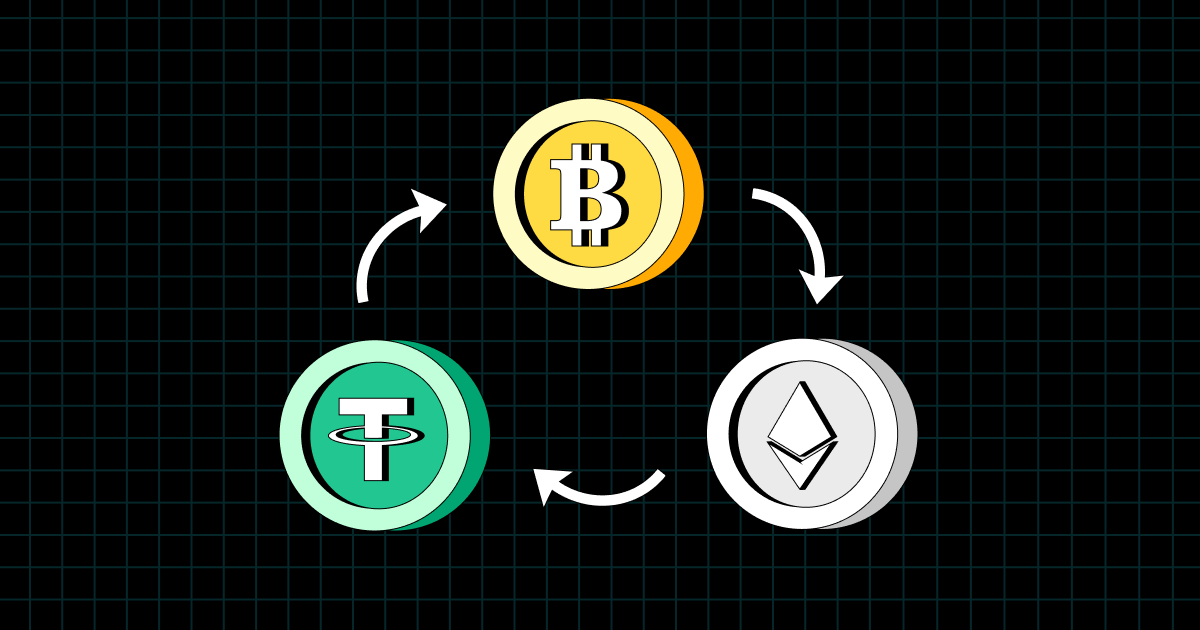Cryptocurrency pricing is not centralized, but in real time on dozens of trading platforms. This creates a favorable environment for one of the oldest and most precise strategies: arbitrage. It is about taking advantage of the price differences of the same asset on different exchanges. In conditions of high volatility, lack of liquidity and decentralized exchanges, there is an opportunity to make money with cryptocurrency arbitrage. Read the article to learn how to do it. Our analysis starts from the basics, then goes into the variants and then moves on to practical calculations, possibilities and dangers.
The principle of cryptocurrency arbitrage: how the difference arises
Arbitrage is the simultaneous trading of an asset with the aim of buying it at a certain price and then selling it at a higher price. The main factor that makes the implementation of the strategy possible is the discrepancy between prices on different platforms at the same time. Cryptocurrency arbitrage is possible because there is no single rate and there are differences in price update algorithms, liquidity, currency pairs and fees.
Arbitration agreement formula:
- Buy an asset on stock exchange A at price X.
- Transfer an asset to stock exchange B.
- Sell at price Y, where Y > X.
- Profit = Y – X – commission – transfer costs.
This approach requires fast, accurate commission calculations and control over the relevance of quotes. Deviations of 1-2% at large volumes yield significant benefits. This works particularly well for volatile assets, where volatility is not the exception but the norm.
Types of arbitrage: classification by algorithm and platform
 Arbitrage trading takes different forms, which differ in transaction structure, number of assets, execution speed and geography. To understand how to make money with cryptocurrency arbitrage, it is necessary to consider the following main types:
Arbitrage trading takes different forms, which differ in transaction structure, number of assets, execution speed and geography. To understand how to make money with cryptocurrency arbitrage, it is necessary to consider the following main types:
- Inter-exchange arbitrage is a classic buy/sell transaction between two exchanges.
- Intra-exchange swap: the use of the difference between pairs on the same platform (e.g. ETH/USDT and ETH/BTC).
- Triangular: A sequential exchange of an asset through two intermediaries (e.g. BTC → ETH → USDT → BTC).
- Stablecoin arbitrage involves trading the difference between USDT, USDC and DAI, especially during periods of market congestion.
- Fiat currency arbitrage is the trading of fiat currencies (e.g. USD/KRW, USD/TRY) where the exchange rate depends on the policies of local payment systems.
Each model requires special calculations, software and even bots, especially for high-frequency implementations.
How to start trading cryptocurrencies using the arbitrage model
To begin with, it is necessary to prepare the infrastructure. Arbitrage is impossible without access to multiple exchanges, operational analytics, a calculation tool and high liquidity in the accounts. To begin with, it is necessary to prepare venues, capital, software and access to information channels.

Getting started with cryptocurrency arbitrage:
- Register on at least two exchanges with high volume (Binance, Kraken, Bybit).
- Deposit funds (stablecoins + main pair – BTC/ETH).
- Set up API keys to connect to external trading platforms.
- Development or purchase of an arbitrage bot.
- Commission calculations, withdrawal limits, network confirmation speeds.
At this stage, it is important not to chase complexity. Even arbitrage within an exchange without transferring assets can yield a profit of between 0.3% and 0.8% of the trading volume. The most important thing is the calculation speed and the speed of reaction to changing circumstances.
Making money with cryptocurrency arbitrage: calculation examples
To understand how to make money with cryptocurrency arbitrage, you need specific figures. Below is an analysis of the agreement, using actual parameters and taking into account commissions.
Example of an inter-exchange transaction:
- Exchange A: ETH/USDT – $3,200.
- Exchange B: ETH/USDT – $3,260.
- The difference is $60.
- The entry fee is $10.
- Trading commission – 0.2% (when buying and selling).
- Potential profit of 1 ETH = $3260 – $3200 – $10 – $6.52 = $43.48.
With 10 ETH, the outcome would be $434.80. This is for one iteration. Such opportunities occur 3 to 5 times a day with high volatility.
How to make money with cryptocurrency arbitrage and minimize risk
With any strategy, you need to consider not only potential profits, but also likely losses. In arbitrage, errors occur not through the use of inappropriate means, but through bad timing. A one-minute delay in transferring an asset between exchanges can disrupt the entire calculation. Therefore, the question of how to make money with cryptocurrency arbitrage cannot be separated from risk assessment.

Key factors:
- Blockchain speed: BTC transfers take between 10 and 60 minutes, ETH transfers between 15 seconds and 5 minutes during peak hours.
- Fees: The Ethereum network charges up to $40 per transaction during peak hours.
- Price fluctuations: Arbitration window may disappear before sending.
- Delays in changes: technical failures, withdrawal queues, verification.
- Limit control: withdrawal or trading restrictions.
- API access: unstable keys break bots.
To limit losses, they use multiple accounts, accelerated blockchains (Solana, Tron), pre-calculation strategies via price difference scanners and placing pre-orders. All this makes arbitrage a high-tech negotiation that requires preparation.
Automation: why a bot is not a luxury, but a necessity
Human reaction is not able to process arbitrage opportunities in real time. The market changes every second, so manual execution is inefficient. The main tool for stable work is an arbitrage bot.
Advantages of automation:
- Instant analysis of more than 100 pairs on dozens of exchanges.
- Reduce the human factor.
- Works according to the algorithm 24 hours a day, 7 days a week.
- Ability to set profitability limits, commission accounting and filtering.
In practice, they use self-written scripts, SAAS solutions or pre-built platforms with business strategies. The main thing is a precise control of the logic. An error in the code can lead to buying at a high price and selling at a loss. Even in stablecoin arbitrage, a deviation of 1% is already money if the turnover is high.
Advantages and disadvantages of cryptocurrency arbitrage
The arbitrage potential is high. But as with any quick money model, behind the apparent simplicity lies a complexity of execution. An analysis of how to make money with cryptocurrency arbitrage would not be complete without a definitive assessment of its advantages and limitations.
Advantages:
- High capital turnover.
- Minimize dependence on exchange rate growth.
- Work in both directions: growth and decline.
- Suitable for short-term strategy.
- Logic for immediate execution.
Deficiencies:
- Requires constant monitoring.
- High technical complexity.
- Instability of the price window.
- Exchange rate restrictions.
- Unpredictability of rates.
A balanced approach consists of testing, calculations, applying constraints and constant analysis of the logic of market behavior. Without this, even a precise strategy can become a source of losses.
How to make money with cryptocurrency arbitrage: Conclusion
 Arbitrage doesn’t require market prediction. It’s speed, structure, calculation, and a willingness to make quick decisions. How to make money with cryptocurrency arbitrage? As long as there are dozens of exchanges, coins, pairs, tokens, and valuation methods, there will be opportunities to profit from discrepancies. Either way, only those who understand the structure, assess the risks, track the costs, and test hypotheses can make a sustainable income from cryptocurrency arbitrage.
Arbitrage doesn’t require market prediction. It’s speed, structure, calculation, and a willingness to make quick decisions. How to make money with cryptocurrency arbitrage? As long as there are dozens of exchanges, coins, pairs, tokens, and valuation methods, there will be opportunities to profit from discrepancies. Either way, only those who understand the structure, assess the risks, track the costs, and test hypotheses can make a sustainable income from cryptocurrency arbitrage.
 en
en  ru
ru  de
de  ar
ar  es
es  nl
nl  hi
hi  fr
fr  it
it  pt
pt  el
el 











